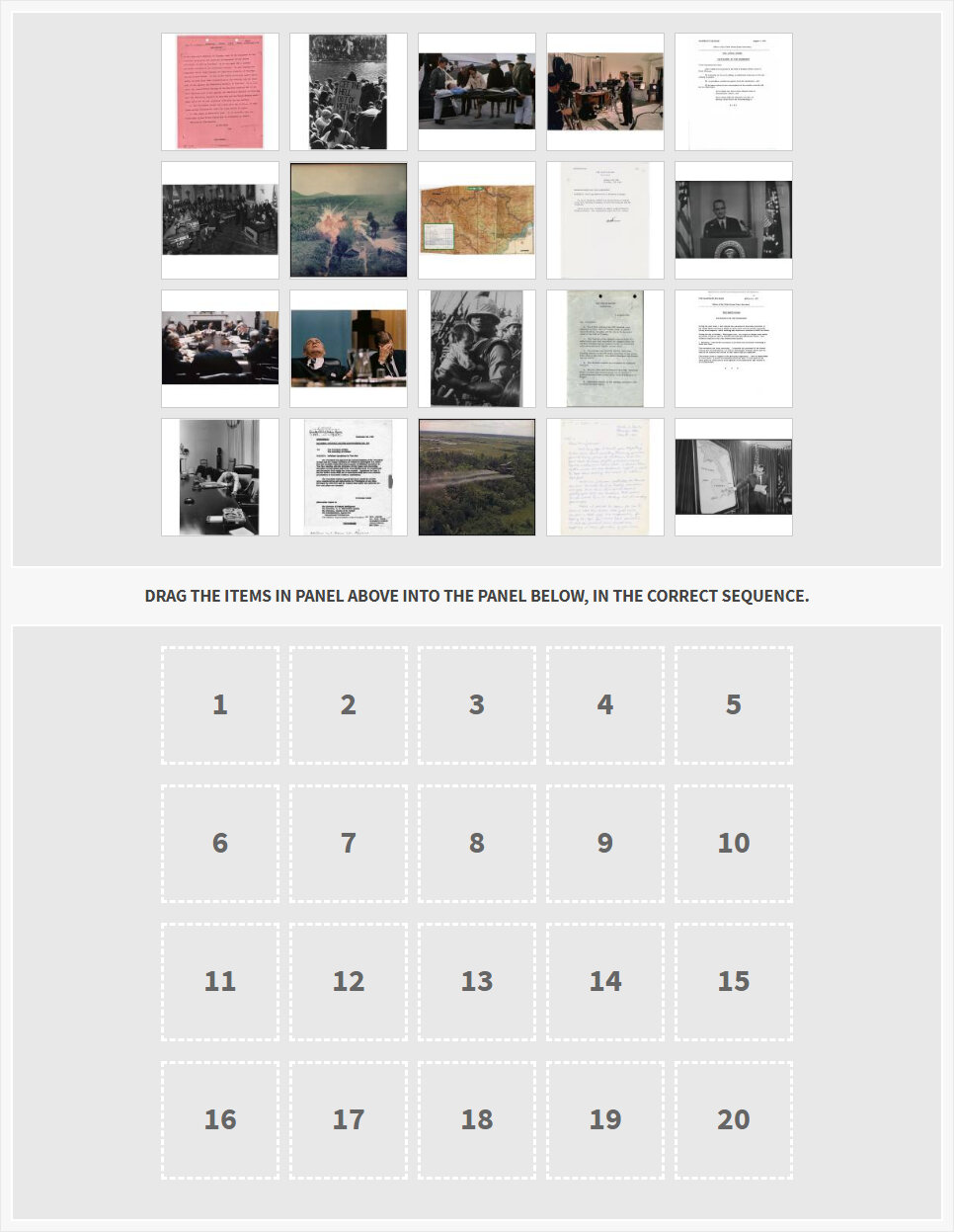The Vietnam War Timeline: Understanding the nature of a controversial conflict
Finding a Sequence

About this Activity
- Created by:LBJ Presidential Library
- Historical Era:Postwar United States (1945 to early 1970s)
- Thinking Skill:Chronological Thinking
- Bloom's Taxonomy:Analyzing
- Grade Level:High School
In this activity, students will use primary sources to create a chronological understanding of the Vietnam War from 1956 to 1975. Students will analyze and read about each document, photograph, or video to better understand the context of the source and place it in the correct order within the timeline. Then, students will analyze the nature of the war as it changed over time by answering the end-of-activity questions.
Topics covered in this activity include:
https://docsteach.org/activities/student/vietnam-war-timelineTopics covered in this activity include:
- Gulf of Tonkin Resolution
- Nature of Fighting
- Technology of Fighting (Defoliant Agents and "Agent Orange", Napalm, Helicopters)
- Operation Rolling Thunder
- Anti-War Movement
- Soldier Experience
- Tet Offensive
- 1968 Election
- Laos & Cambodia
- Geographical Challenges
- Evacuation of Saigon
Documents in this activity
- Vietnamese Popular Force Soldier and U.S. Marine Practice Ambush Techniques
- Regional Forces Enroute to the Suspected Viet Cong Base Camp
- A Viet Cong Soldier Crouches in a Bunker with an SKS Rifle
- Vietnamese Army's Seven Commandments Poster 7
- Arrival of the U.S. 1st Cavalry Division (Air Mobile) in Vietnam
- Certification of the 26th Amendment
- First Family Visiting with Combat Soldiers Wounded in Vietnam
- Newspaper Article "D.M. Schools Ban Wearing of Viet Truce Armbands"
- “Withdrawal Speech” by President Johnson
- Tonkin Gulf Resolution
- Letter from Mrs. Keck to President Johnson Regarding her Son's Death
- Memo from Walt W. Rostow to President Johnson
- Memorandum Notifying President Johnson of Attack on the USS Maddox
- Napalm Bombs Explode on Viet Cong Structures
- National Security Action Memorandum No. 115 Defoliant Operations in Vietnam
- Operation Shelby- Manuel Garcia Cleans His M-16 Rifle
- President Johnson and Secretary of Defense Robert McNamara at a Cabinet Meeting
- President Johnson's Vietnam Address
- President Richard Nixon During a Vietnam War Press Conference
- Press Release Following the First Tonkin Gulf Incident
- Private First Class Joseph Big Medicine Jr.
- The March on the Pentagon
- Richard Nixon in Chu Lai, South Vietnam
- Rolling Thunder 53 Strike Map
- Sergeant Robert E. Fears
- State Department Telegram Text of a Letter from Ho Chi Minh to President Johnson
- Statement by the President on Evacuation of American Personnel from South Viet Nam
- UH-1D Medevac Helicopter in South Vietnam
- Captured Viet Cong Prisoner
- 336th Aviation Company Sprays a Defoliation Agent on a Jungle in the Mekong Delta




